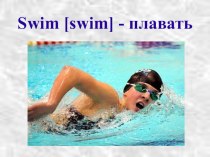- Главная
- Разное
- Бизнес и предпринимательство
- Образование
- Развлечения
- Государство
- Спорт
- Графика
- Культурология
- Еда и кулинария
- Лингвистика
- Религиоведение
- Черчение
- Физкультура
- ИЗО
- Психология
- Социология
- Английский язык
- Астрономия
- Алгебра
- Биология
- География
- Геометрия
- Детские презентации
- Информатика
- История
- Литература
- Маркетинг
- Математика
- Медицина
- Менеджмент
- Музыка
- МХК
- Немецкий язык
- ОБЖ
- Обществознание
- Окружающий мир
- Педагогика
- Русский язык
- Технология
- Физика
- Философия
- Химия
- Шаблоны, картинки для презентаций
- Экология
- Экономика
- Юриспруденция
Что такое findslide.org?
FindSlide.org - это сайт презентаций, докладов, шаблонов в формате PowerPoint.
Обратная связь
Email: Нажмите что бы посмотреть
Презентация на тему Sport in Canada
Содержание
- 2. ICEHOCKEY
- 3. The modern form of ice hockey began
- 4. There are national championships in several other
- 5. In terms of spectators, the most popular
- 6. The annual IIHF Men's Junior World Championship,
- 7. LACROSSE
- 8. The First Nations began playing the sport
- 9. The Canadian Lacrosse Association, founded in 1925,
- 10. CANADIAN FOOTBALL
- 11. Canadian football is a form of gridiron
- 12. In Canada, the term football usually refers
- 13. FIGURESKATING
- 14. The Amateur Skating Association of Canada was
- 15. Louis Rubenstein was the first president, a
- 16. In 1947 the CFSA national office was
- 17. CURLING
- 18. Curling is most popular in the prairie
- 19. BASKETBALL
- 20. The National Basketball Association (NBA) recognizes its
- 21. OLYMPIC GAMES
- 22. Canada has competed at every Olympic Games,
- 23. At the summer games, the majority of
- 24. After Canada failed to win any gold
- 25. . Canada did not win the most
- 26. Скачать презентацию
- 27. Похожие презентации
ICEHOCKEY



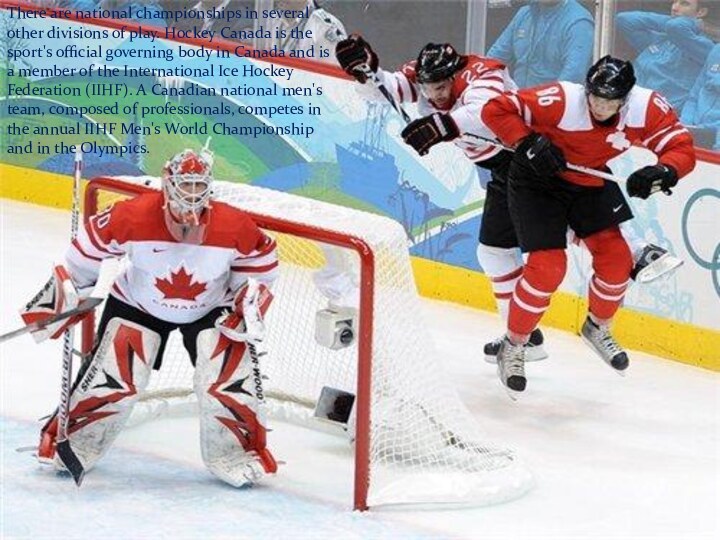
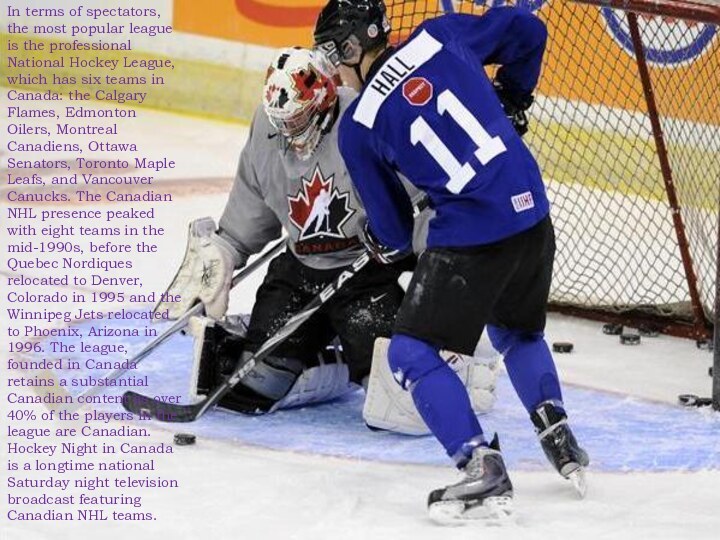


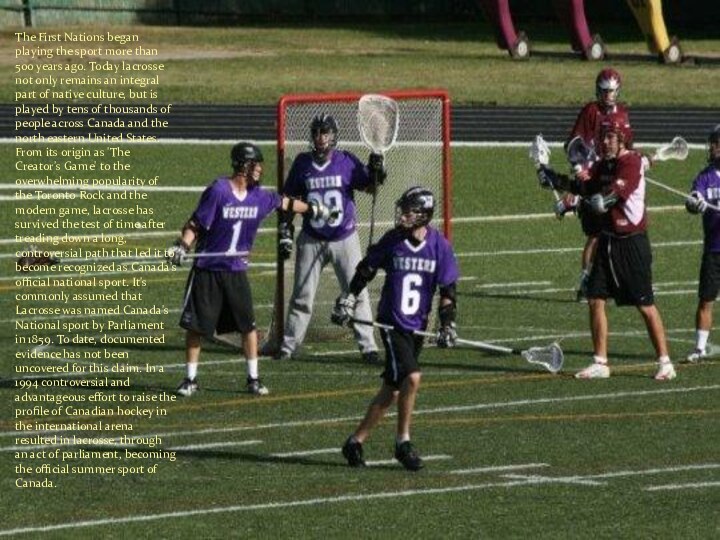

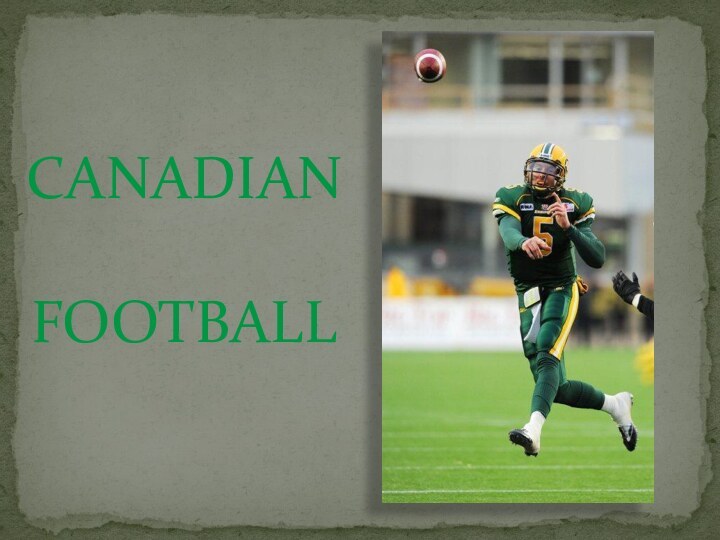
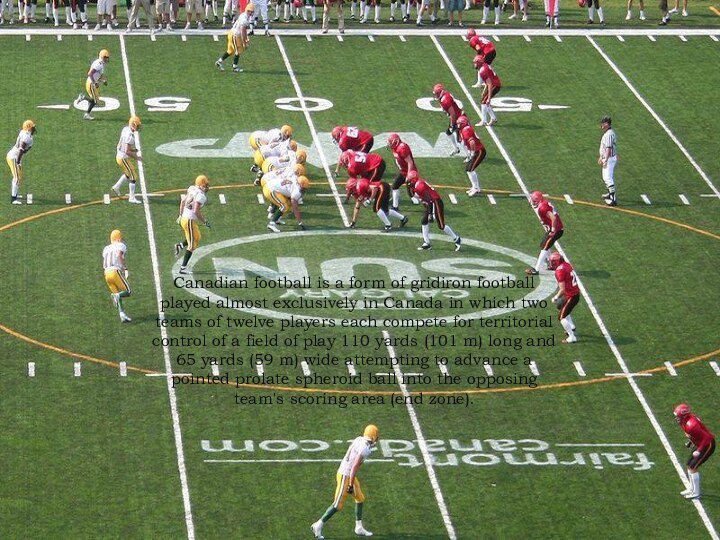
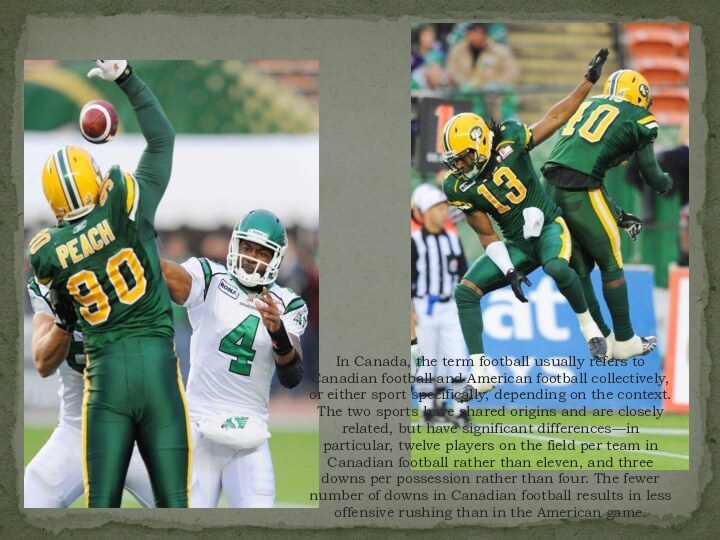
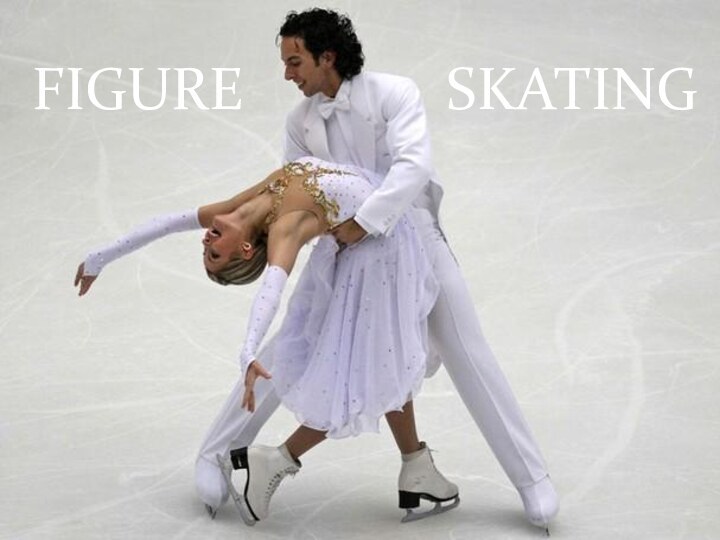

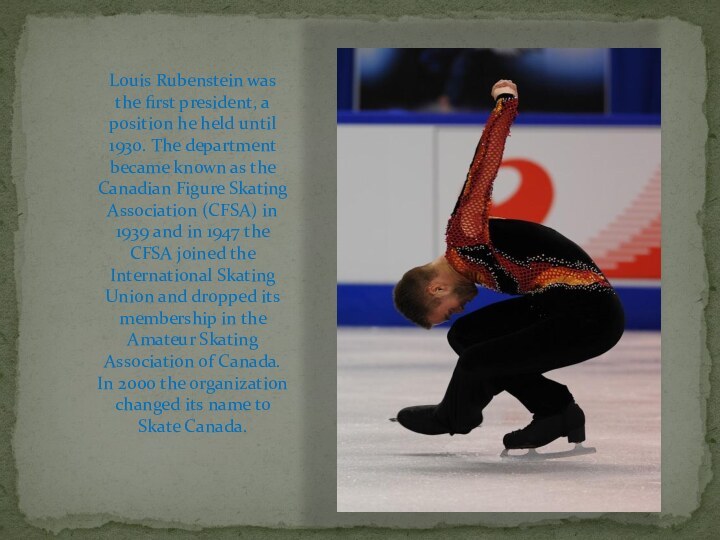





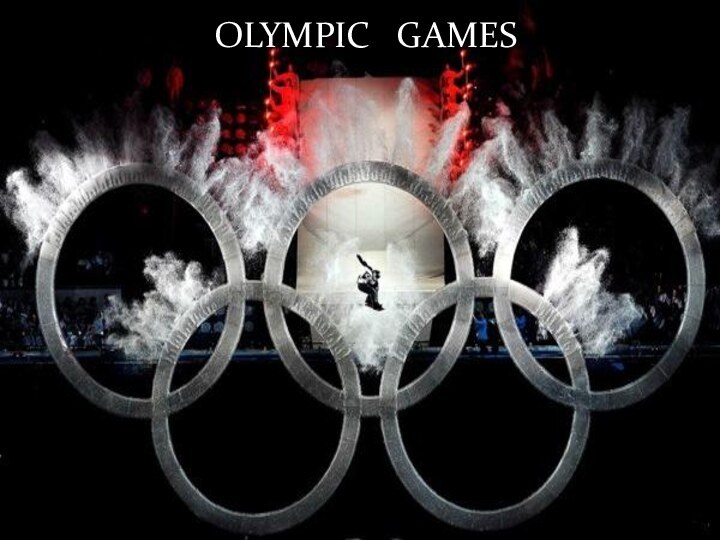


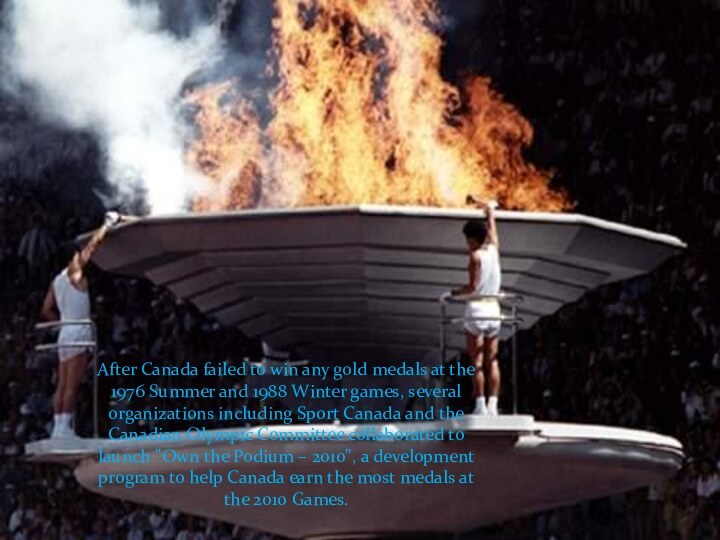
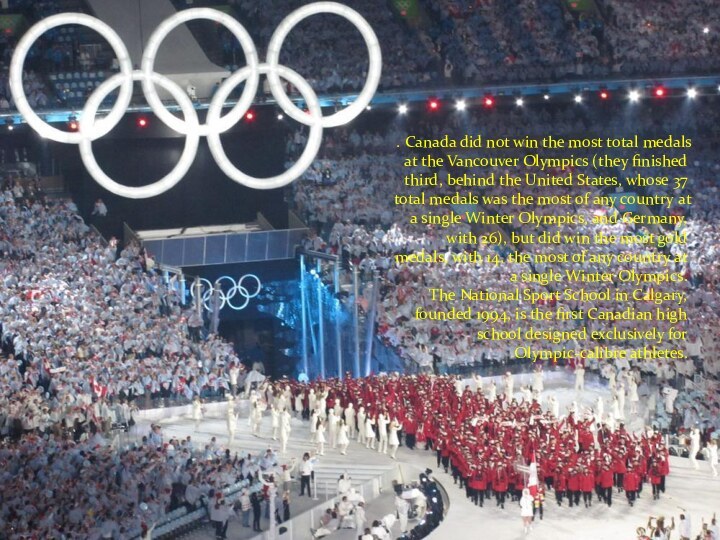

Слайд 4 There are national championships in several other divisions
of play. Hockey Canada is the sport's official governing
body in Canada and is a member of the International Ice Hockey Federation (IIHF). A Canadian national men's team, composed of professionals, competes in the annual IIHF Men's World Championship and in the Olympics.Слайд 5 In terms of spectators, the most popular league
is the professional National Hockey League, which has six
teams in Canada: the Calgary Flames, Edmonton Oilers, Montreal Canadiens, Ottawa Senators, Toronto Maple Leafs, and Vancouver Canucks. The Canadian NHL presence peaked with eight teams in the mid-1990s, before the Quebec Nordiques relocated to Denver, Colorado in 1995 and the Winnipeg Jets relocated to Phoenix, Arizona in 1996. The league, founded in Canada retains a substantial Canadian content as over 40% of the players in the league are Canadian. Hockey Night in Canada is a longtime national Saturday night television broadcast featuring Canadian NHL teams.Слайд 6 The annual IIHF Men's Junior World Championship, played
during December and January, is popular among Canadian television
viewers and has been held in Canada numerous times due to its popularity.Junior-age ice hockey is also a popular spectator sport. The junior-age Canadian Hockey League is broadcast nationally and its annual championship is a popular television event.
Слайд 8 The First Nations began playing the sport more
than 500 years ago. Today lacrosse not only remains
an integral part of native culture, but is played by tens of thousands of people across Canada and the north eastern United States. From its origin as 'The Creator's Game' to the overwhelming popularity of the Toronto Rock and the modern game, lacrosse has survived the test of time after treading down a long, controversial path that led it to become recognized as Canada's official national sport. It's commonly assumed that Lacrosse was named Canada's National sport by Parliament in 1859. To date, documented evidence has not been uncovered for this claim. In a 1994 controversial and advantageous effort to raise the profile of Canadian hockey in the international arena resulted in lacrosse, through an act of parliament, becoming the official summer sport of Canada.
Слайд 9
The Canadian Lacrosse Association, founded in 1925, is
the governing body of lacrosse in Canada. It conducts
national junior and senior championship tournaments for men and women in both field and box lacrosse. It also participated in the inaugural World Indoor Lacrosse Championship in 2003. The National Lacrosse League is a professional box lacrosse league, with franchises in Canada and the United States. The 2006 World Lacrosse Championship was held in London, Ontario. Canada beat the United States 15-10 in the final to break a 28-year U.S. winning streak. One of the best lacrosse players of all time, Gary Gait was born in Victoria, British Columbia and has won every possible major lacrosse championship. Great achievements in Canadian Lacrosse are recognized by the Canadian Lacrosse Hall of Fame.Слайд 11 Canadian football is a form of gridiron football
played almost exclusively in Canada in which two teams
of twelve players each compete for territorial control of a field of play 110 yards (101 m) long and 65 yards (59 m) wide attempting to advance a pointed prolate spheroid ball into the opposing team's scoring area (end zone).Слайд 12 In Canada, the term football usually refers to
Canadian football and American football collectively, or either sport
specifically, depending on the context. The two sports have shared origins and are closely related, but have significant differences—in particular, twelve players on the field per team in Canadian football rather than eleven, and three downs per possession rather than four. The fewer number of downs in Canadian football results in less offensive rushing than in the American game.Слайд 14 The Amateur Skating Association of Canada was formed
in 1887 and by 1914 a separate organization for
figure skating had been established. This was known as the Figure Skating Department of the Amateur Skating Association of Canada and the initial members were Ottawa 's Minto Club and the Earl Grey Club in Montreal. The first official annual figure skating championships of Canada were held in the same year under the new organization.Слайд 15 Louis Rubenstein was the first president, a position
he held until 1930. The department became known as
the Canadian Figure Skating Association (CFSA) in 1939 and in 1947 the CFSA joined the International Skating Union and dropped its membership in the Amateur Skating Association of Canada. In 2000 the organization changed its name to Skate Canada.Слайд 16 In 1947 the CFSA national office was set
up in Ottawa by Charles H. Cumming, the Association's
Secretary-Treasurer. The office was run on a volunteer basis until 1958 when Cumming became the first full-time employee of the CFSA.Слайд 18 Curling is most popular in the prairie provinces
with the most competitive teams in recent years coming
from the province of Alberta. However, curling has a degree of popularity across the country. For example, a team from Quebec, which is not a traditional hotbed of curling, won the Tim Hortons Brier (national men's championship) in 2006. The Scotties Tournament of Hearts is the national women's championship. The Canadian Curling Association is the sport's national governing body; great achievements are recognized by the Canadian Curling Hall of Fame.Слайд 20 The National Basketball Association (NBA) recognizes its first
ever game as being a contest between the New
York Knickerbockers and Toronto Huskies at Toronto's Maple Leaf Gardens on November 1, 1946. The NBA expanded into Canada in 1995 with the addition of the Toronto Raptors and Vancouver Grizzlies. The Grizzlies moved to Memphis, Tennessee in 2001, but the Raptors continue to draw healthy crowds at the Air Canada Centre. The 2005 and 2006 NBA MVP, Phoenix Suns point guard Steve Nash, is from Victoria, British Columbia and has played in international competitions for Canada's national team.Слайд 22 Canada has competed at every Olympic Games, except
for the first games in 1896 and the boycotted
games in 1980. Canada has previously hosted the games three times, at the 1976 Summer Olympics in Montreal, the 1988 Winter Olympics in Calgary, and the 2010 Winter Olympics in Vancouver.Слайд 23 At the summer games, the majority of Canada's
medals come from the sports of athletics, aquatics (swimming,
synchronized swimming and diving), rowing and canoeing/kayaking. In the post-boycott era (since 1988), Canada's medal total ranks 19th in the world, with the highest rank of 11th in 1992 and the lowest of 24th in 2000.At the winter games, Canada is usually one of the top nations in terms of medals won. Canada is traditionally strong in the sports of ice hockey, speed skating (especially the short track variation), figure skating and every Canadian men's and women's curling teams have won medals since the sport was added to the Olympic program.
Слайд 24 After Canada failed to win any gold medals
at the 1976 Summer and 1988 Winter games, several
organizations including Sport Canada and the Canadian Olympic Committee collaborated to launch "Own the Podium – 2010", a development program to help Canada earn the most medals at the 2010 Games.Слайд 25 . Canada did not win the most total
medals at the Vancouver Olympics (they finished third, behind
the United States, whose 37 total medals was the most of any country at a single Winter Olympics, and Germany, with 26), but did win the most gold medals, with 14, the most of any country at a single Winter Olympics.The National Sport School in Calgary, founded 1994, is the first Canadian high school designed exclusively for Olympic-calibre athletes.





